► Polestar 4 driven in the UK
► Rival for Porsche Macan, Audi Q6 E-Tron and Tesla Model Y
► Single or dual motor available, rear window not available…
This is the Polestar 4, the most futuristic car yet from the Volvo off-shoot. It’s a sleek, modish coupe-electric SUV-thing that’s ambitiously targeting the Porsche Macan Electric, Kia EV6 GT and Tesla Model Y – not exactly the easiest competition – but it has one or two tricks up its well-designed sleeved.
You’ll have heard all about its most distinctive feature – the lack of a rear window – but there’s far more to this car than that. For a start, there’s the rest of the cabin, which features a super-minimalist design and the Google HMI system everything runs on.
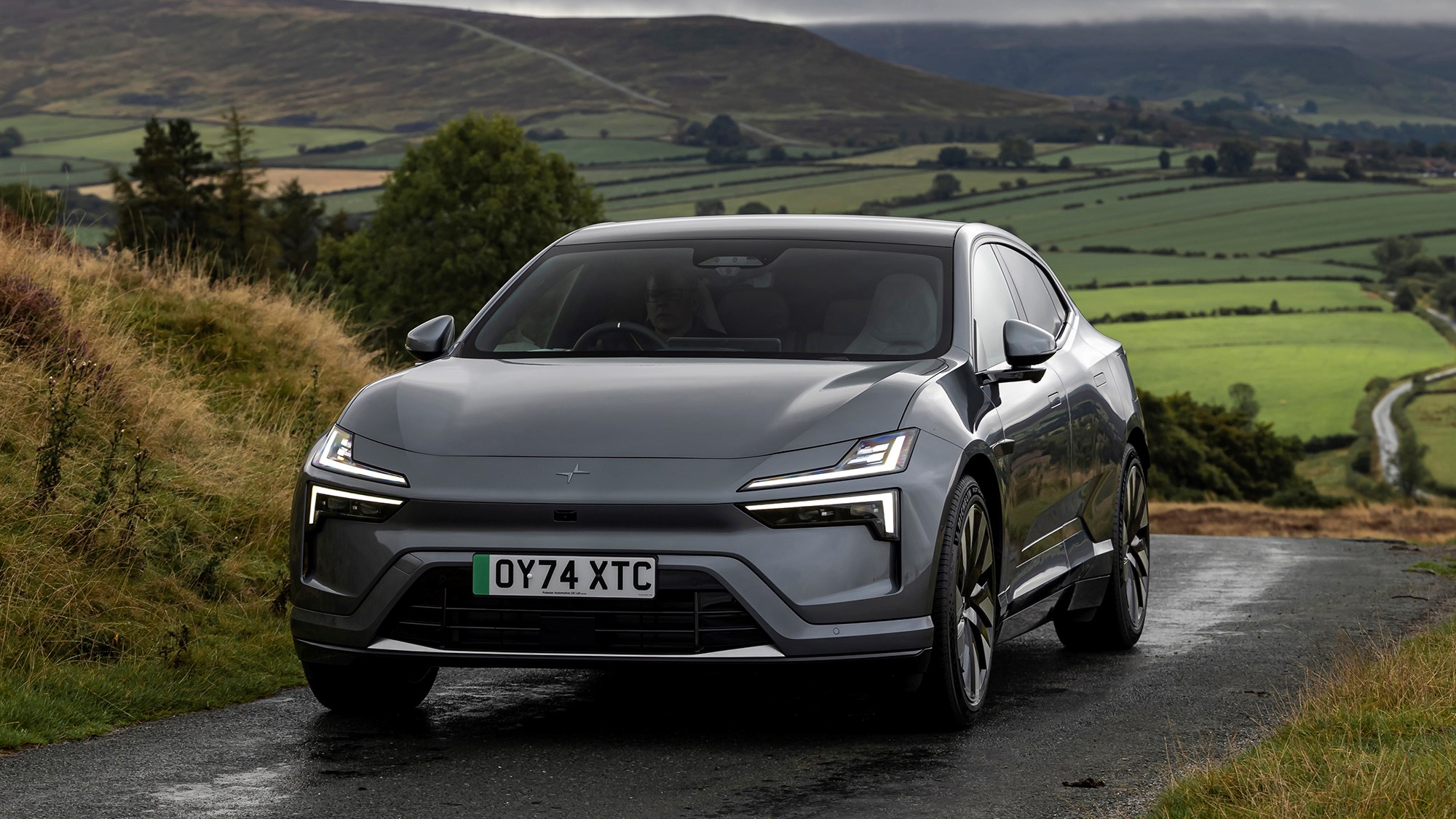
Sitting between the 2 and the 3 in terms of size (confusing we know) the Polestar 4 is a captivating option for those looking for an electric SUV. But is it a good one? To find we’ve driven the 4 at length. We’re also running one as a long-termer right now, so the impressions here come with thousands of miles of experience with the car.
Should I buy a Polestar 4? Not yet. Although it benefits from class-leading design and impressive handling (especially if you get the Performance Pack) there are simply too many bugs to fully recommend it.
At a glance
Pros: Pleasing interior, comfortable ride, good range, punchy performance
Cons: Macan is more fun, small boot, tech can frustrate
What’s new?
The 4 is one of the most futuristic-looking cars you can buy right now. It also represents the biggest stylistic break yet from parent company Volvo. That’s no bad thing though, because the 4 is a fantastic-looking car. Larger than you’d expect in person, it’s got sci-fi looks, especially at the rear – and it’s a similar story inside too.
Of course, pretty much everything is new to Polestar, although much is shared with other cars in the Geely group. That includes the SEA component set that also underpins the far cheaper Volvo EX30 and Smart #1. Neither are bad cars, but they’re almost half the price of the Polestar which competes with the new all-electric Porsche Macan and Audi Q6 E-Tron on their fancy PPE platform.
What are the specs?
The Polestar 4 uses a 100kWh battery pack, 94kWh of which is usable, a 400-volt architecture (800-volt cars do exist on the SEA platform (Polestar reckons an upgrade within the 4’s lifespan isn’t beyond the realms of possibility) and offers a fast-charging capacity of 200kW, 70kW down on the Macan.
Geely is no stranger to burning early customers – for example, the Volvo EX90 SUV first arrived with 400-volt circuitry, but a MY update will soon see it adopt 800-volt tech, like the ES90 saloon that follows it. That’s got to be disconcerting for Polestar early-adopters.
Two versions of the 4 are offered. The Long range Single motor (the car for which you’ll see specs here), priced from £59,990, gets you 268bhp, 253lb ft, 0-62mph in 7.1sec and an official range figure of 379 miles. The £66,990 Long range Dual motor adds a second identical motor to the front axle to hike peak output to 536bhp and all but halve the 0-62mph time (to 3.8sec), to the detriment of the official WLTP range figure, which drops to still-respectable 360 miles.
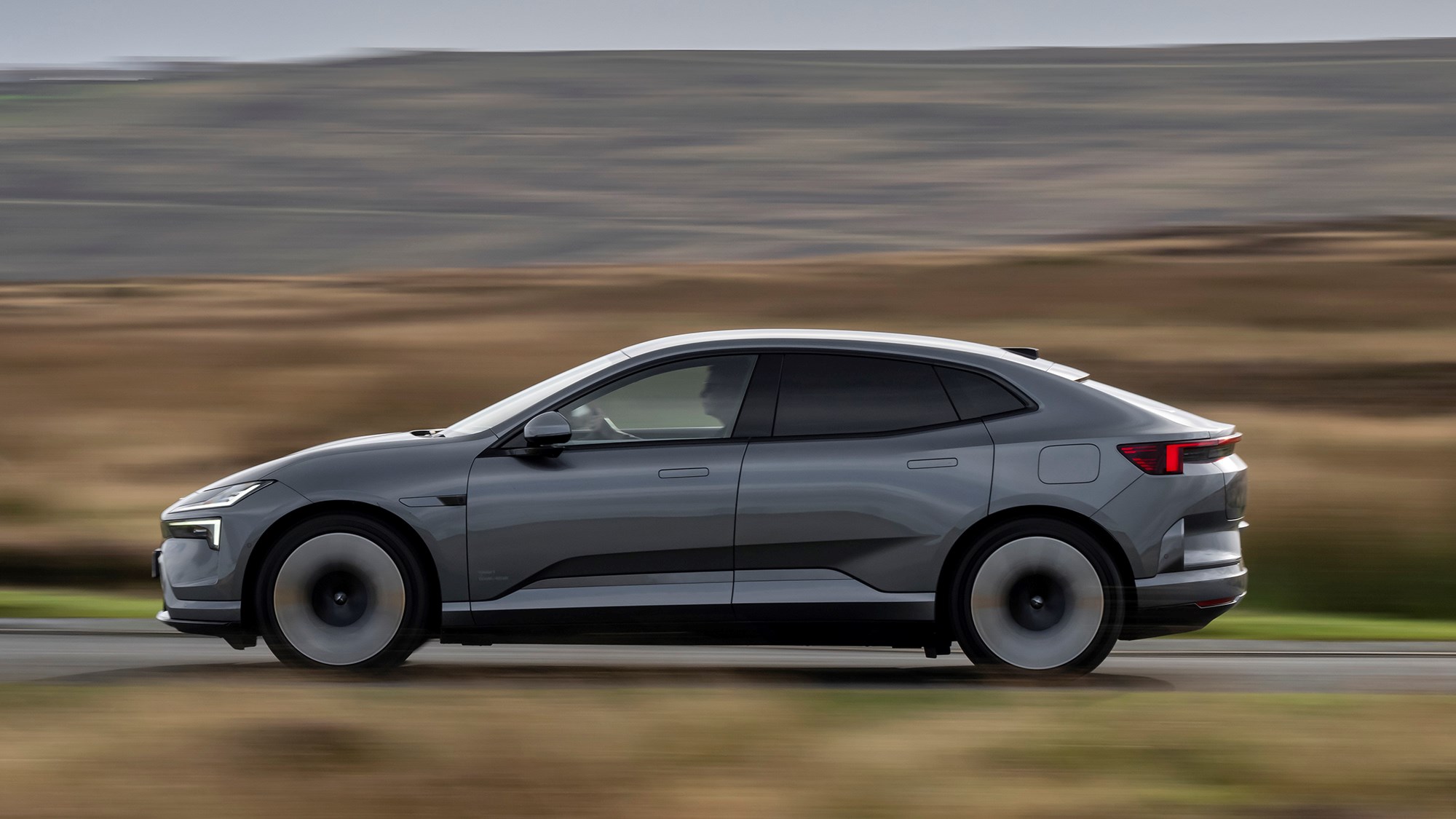
For context the new Macan Electric splits the two 4s on performance (5.2sec 0-62mph and 382bhp), with a base price – £69,800 – more expensive than both. Thanks to its rampant price cuts the Tesla Model Y Performance currently costs the same as Single motor 4 while offering the same speed as the Dual motor.
Unlike on the 2, the Performance Pack doesn’t add any extra punch from the 4s powertrain. Instead, it’s more about handling, and focuses on the wheels, tyres and brakes.
How does it drive?
Get moving with the Polestar 4 and you may be pleasantly surprised. The steering has heft without being heavy and responds quickly without being nervous, while the brakes blend regen and friction well. Even big names like Mercedes struggle with that. The 4 strikes a good balance between ride and handling despite relatively simple suspension, too. You’ll not find any air springs, anti-roll tech or four-wheel steering on any Polestar 4.
There is an underlying firmness to the way it deals with surface imperfections, yet it’s never jarring or uncomfortable. It’s also entirely forgivable given how good body control is and how little roll you experience. Apparently the 4’s centre of gravity is closer to the ground than the far lower Polestar 1 and I can believe it.

Numbers suggest the 4 will feel a bit sluggish compared to other EVs. The reality is that the single motor is more than quick enough, feeling stronger once it’s rolling than the 0-62mph time would have you believe. Switch the ESC to Sport and it’s certainly enough to enjoy the rear-wheel drive layout and plentiful EV torque.
You’re very aware the ESC is there should things get too rough or sideways, but keep it smooth and fun can be had. Guiding the 4 at speed through B roads is an enjoyable experience, and while there’s not masses of feel filtering through the control surfaces, it’s a satisfying thing to hustle along and its relatively compact dimensions lend confidence on narrow B-roads.
In contrast, the Performance Pack is very clearly a quick car, and makes that very clear from the get-go. Where the single motor felt Fiesta ST fast, the PP hits you like an RS3 on full launch control. No, it’s not as rapid as a Macan Turbo or other e-SUVs we could mention, but it’s not often you can fully uncork it, and even then not for long.

It’s delivers power in a super clean and linear way, so in many ways it’s the epitome of electric cars. It’s almost too immediate with the powertrain Performance mode, and we found ourselves using the duller Range mode more often. Out the box its regeneration is remarkable aggressive too. When combined with the powerful Brembos you’ll find yourself jerking back and forward until your brain recalibrates. Our tip, stick it in medium to low regen and eke out the range with thriftier modes.
Unlike Polestar’s Performance Packs of old that require spanners to adjust the ride quality, the 4 gets ‘Active’ dampers. They are able to constantly adjust damping force and their stiffness can be adjusted via the infotainment, with the supplest mode no tougher than the regular single motor.
The mid setting provides slightly brighter responses with full firm still usable on the road. Grip levels are higher and roll angles lower, but it feels a little more two-dimensional than the single motor. The dual motors are most interested in keeping things locked down and neutral, with none of the playfulness of a Macan Turbo. It’s an effective point-to-point machine, if not a very thrilling one.
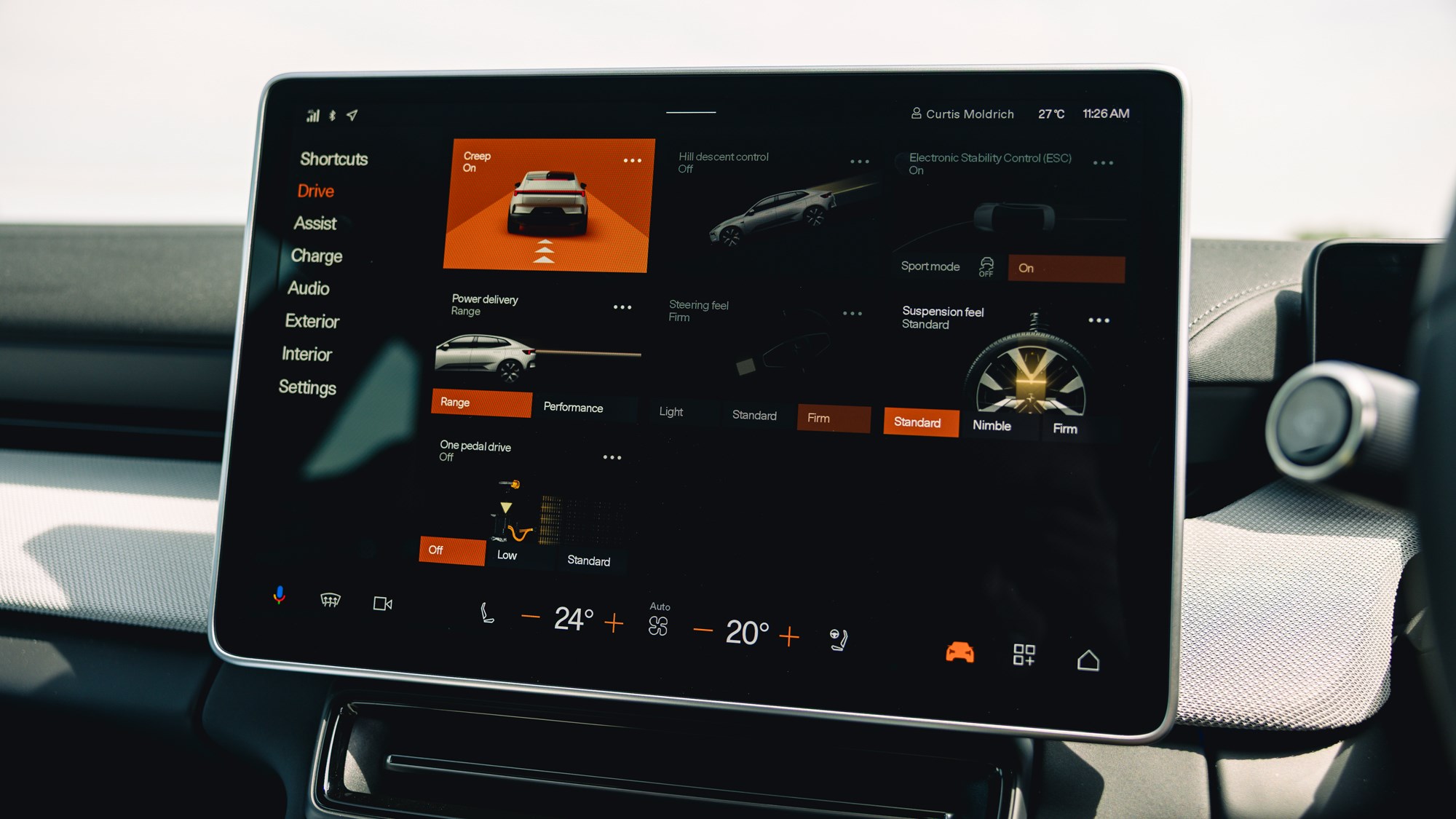
Dialling down to the motorway and the Polestar 4 hunkers down to a relaxed cruise, with just a little wind noise to interrupt the calm. The seating position and forward visibility are good, the seat massagers excellent, and at UK speeds at least, the range doesn’t get too dented by constant-speed running.
There are some key issues though: the autonomous driving aids can be a little too intrusive at times, with the Polestar 4’s AEB often braking automatically when driving down narrow roads with parked cars. Not ideal for me, my passengers nor the cars behind. What’s more, the auto speed detection tends to be wrong quite a lot of the time, often clearly picking speeds up and confusing itself. Speed limits such as 37mph and 18mph occasionally pop up.
What’s it like inside?
Up front, Polestar’s trademark minimalism translates into a stylish, comfortable space with none of the cramped cosiness that affects the smaller 2. It’s like sitting in a high-end Scandinavian living room, with clean lines, fabrics and displays. You sit in slim sports seats, a three-spoke wheel (with a neat centre marker, tellingly) and two portrait screens, a driver’s display and a bigger, portrait-orientated touchscreen.
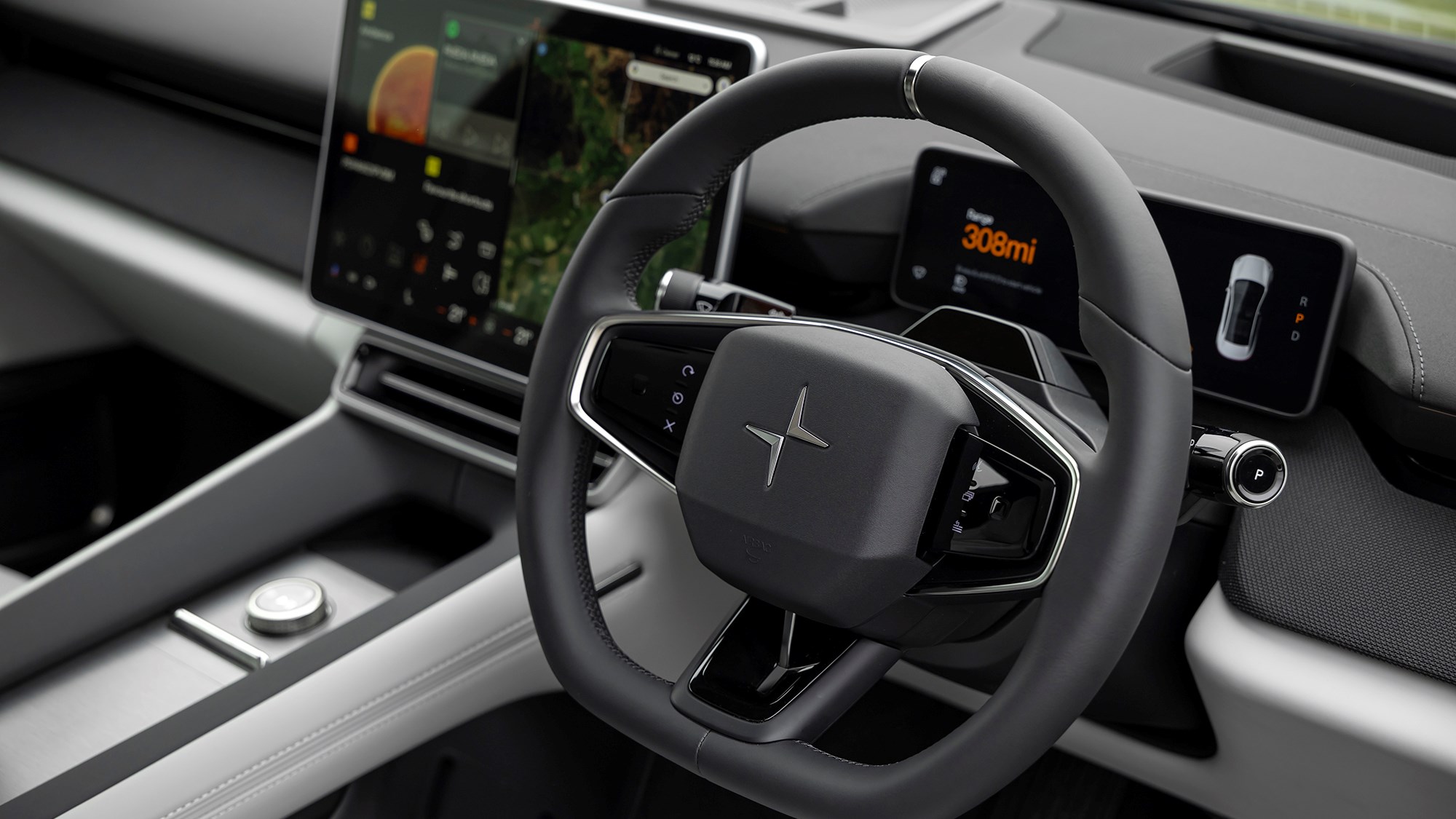
While the latter controls almost everything, there’s still a media on/off volume knob between the seats, stalks behind the wheel and there are configurable shortcut icons for functions you’ll use regularly. The infotainment system is certainly responsive and looks great, but a few more switches would make this a more user-friendly cabin.
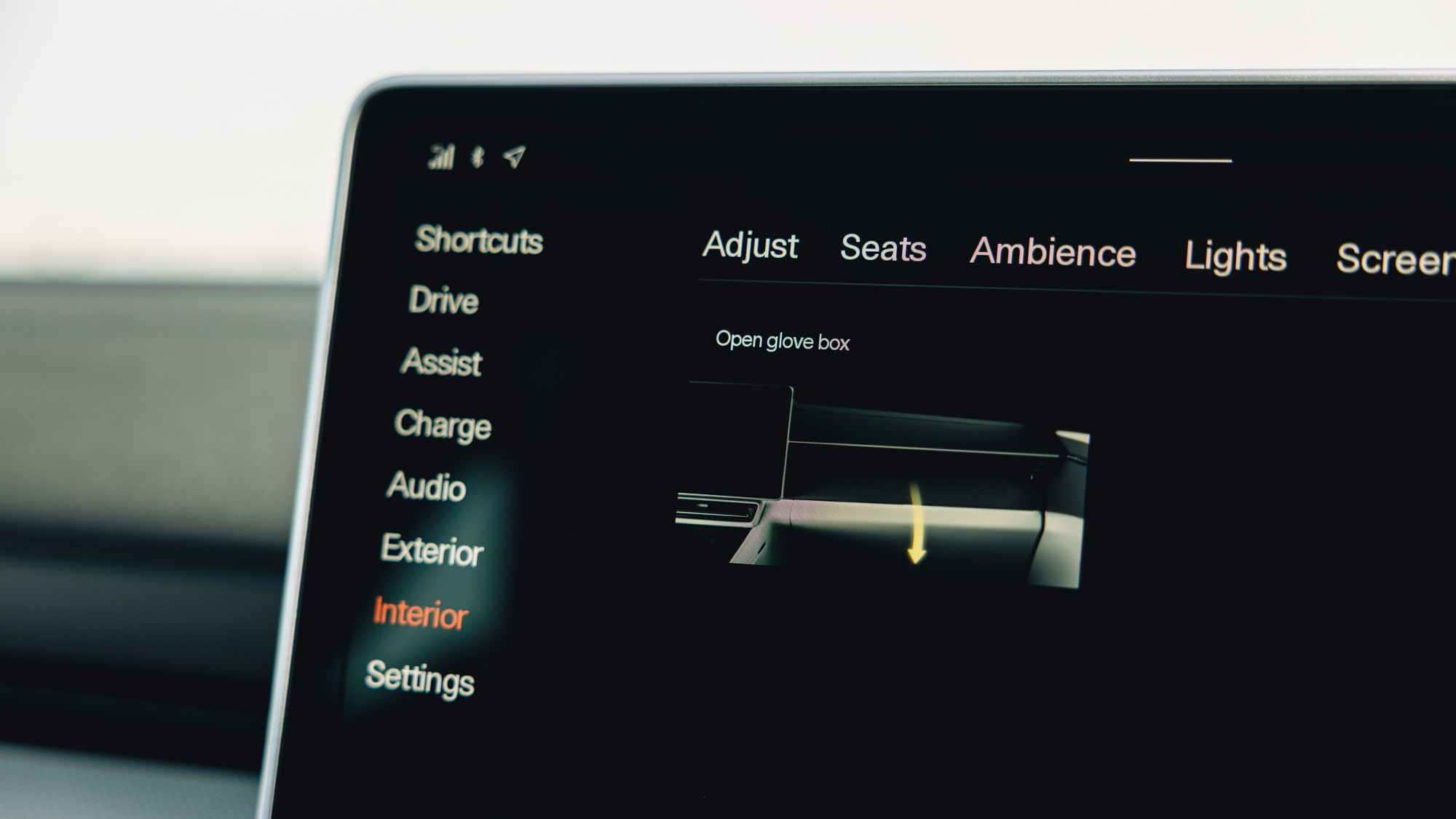
Instead, you’re forced to use the touchscreen to do many things – from opening the boot and adjusting the mirrors to controlling the glove box and the air conditioning. Voice control is available and accurate, but it’s still somewhat alien for a while.
Designer Max Missoni wanted a coupe roofline on a package that, thanks to its underfloor battery and need for decent rear-passenger headroom, didn’t lend itself to the idea. The answer was to move the header rail back, behind second-row heads rather than above them, to create decent headroom beneath the supersonic roofline.

Of course, the Volvo ES90 has since arrived and appears to achieve roughly the same aims whilst also giving us a rear window – but we’ll reserve judgement until we’ve driven it.
Climb into the back and it’s roomy in the extreme (as you’d hope given the 2999mm wheelbase and 4.84m overall length). Headroom is fine for six-footers; tighter if you’re taller. The interior design is quirky but gorgeous, with a neat wing motif that runs around the front of the cockpit and, mirrored, behind second-row occupants, making you feel snug and safe and happy.
The vast panoramic roof can be optioned with electro-chromatic glass and, despite the lack of natural light from behind, there’s no sense of claustrophobia thanks to gentle ambient lighting (colour themes, inspired by the planets of the solar system, are nicely presented on the screen, complete with Polestar show car in space animation).
The 4 is the first car to use Gentex’s next-gen digital rear-view mirror, drawing a feed from a 2.5MP camera high on the trailing edge of the roof to do what a piece of reflective glass no longer can thanks to the lack of rear glazing. It the best implementation of the tech yet, but older drivers especially will struggle to quickly focus on its contents during longer drives.
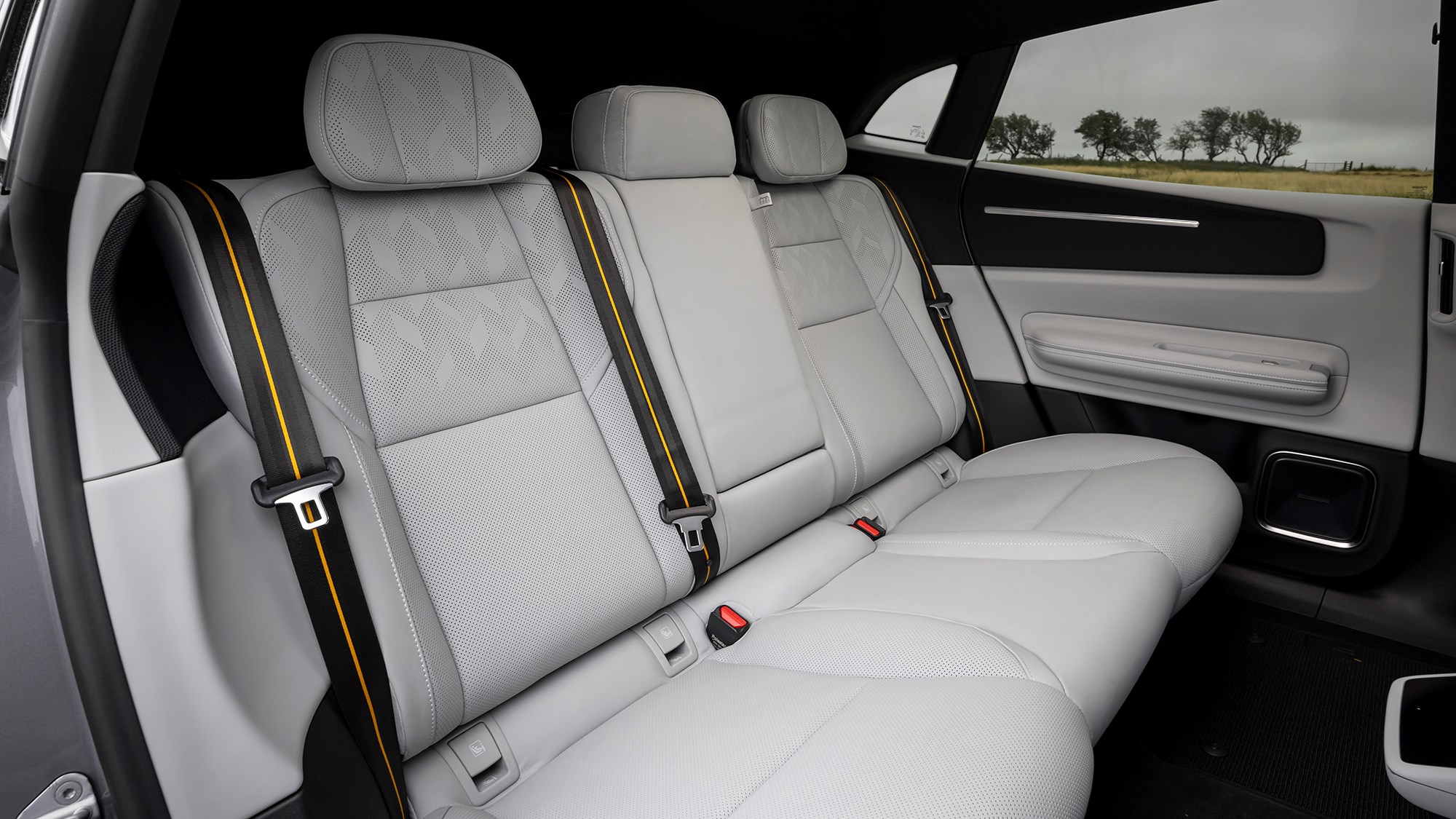
The tech doesn’t always work though: sometimes the car will let you in, sometimes you’ll need to tap the key on the B-pillar to enter. Sometimes it’ll revert to your user profile when you sit in, other times it’ll revert to the default, crushing you between the wheel and seat until you frantically tap your profile. And yes, that’s even with the key configured correctly. Technology is cool, but only if it improves upon the systems it replaces. Right now, in the Polestar 4, that’s not the case.

Polestar 4: verdict
There’s no doubt the Polestar 4 is the best utilisation of Geely’s SEA platform. Its pleasing dynamics and usually welcoming interior make it an appealing entry into the premium SUV class whether you like the windowless rear or not.
It cuts quite a dash in the car park without screaming ‘look at me’, and its calm Swedish-designed interior is an absolute delight to spend time in.
However, the Macan Turbo is a unquestionably a better driver’s than either the single or twin-motor Polestar 4. If you’re comfortable with that and are happy to take the Polestar, then we recommend keeping it simple. As fast and capable as the dual motor Performance Pack is, we had more fun at a lower speed in the single motor.
What’s more, the Polestar 4 is teaming with low-level glitches and tech grumbles – which makes it impossible to recommend in its current form. Our long-termer is temperamental, with many of its features simply unreliable or unpredictable at best. It’s a shame, because the Polestar is 4 is fundamentally an impressive car.